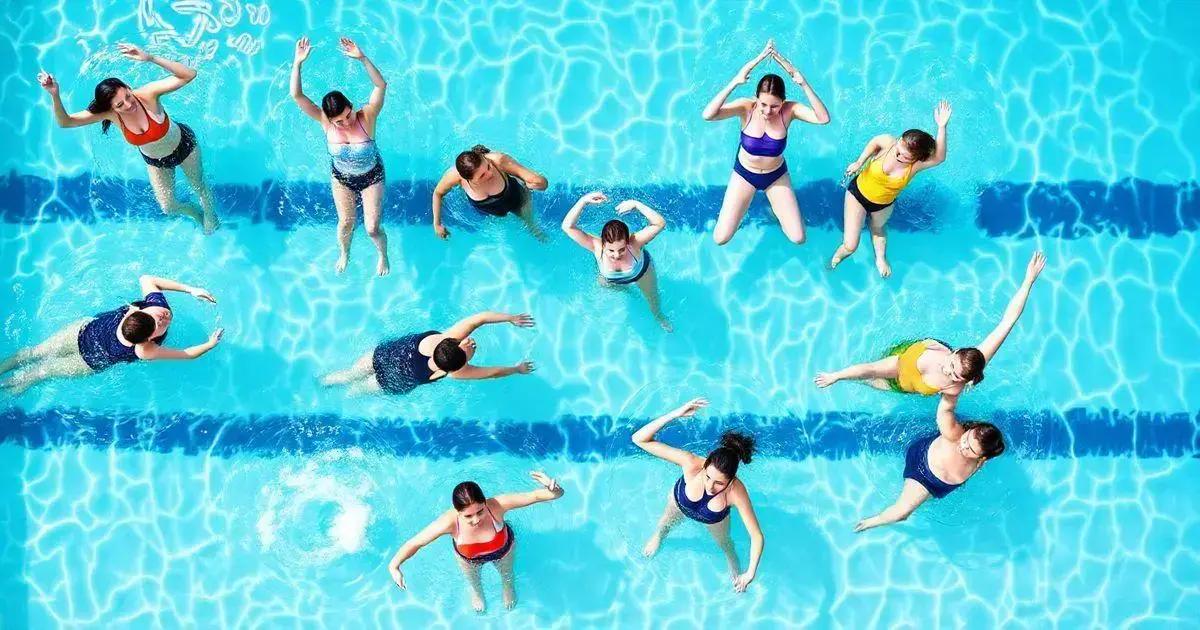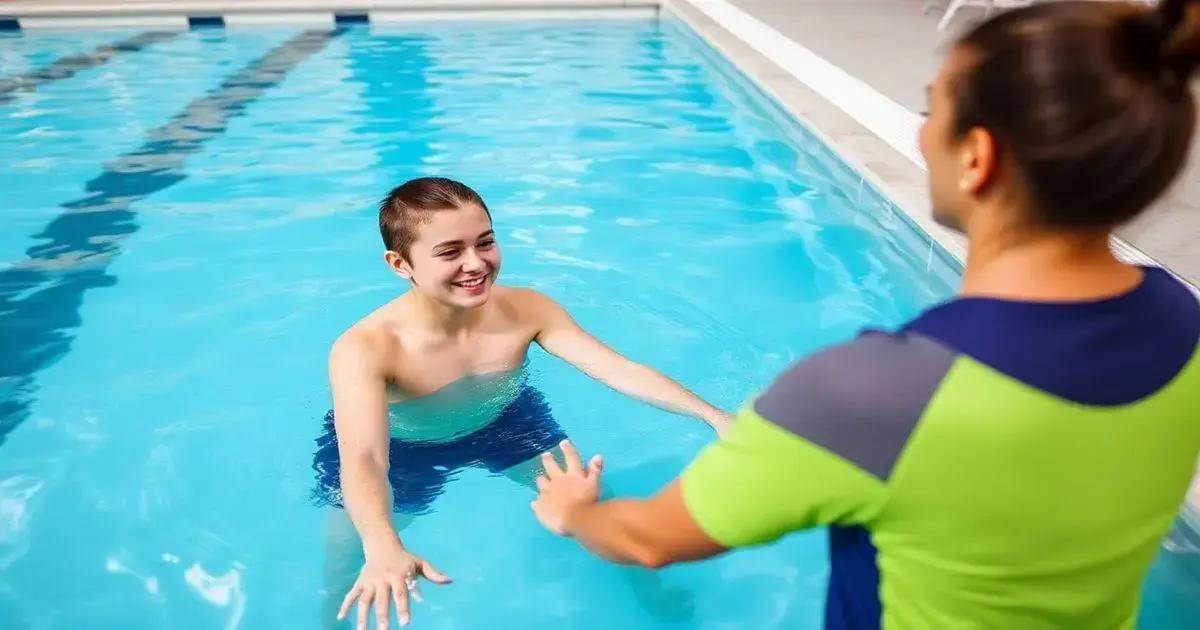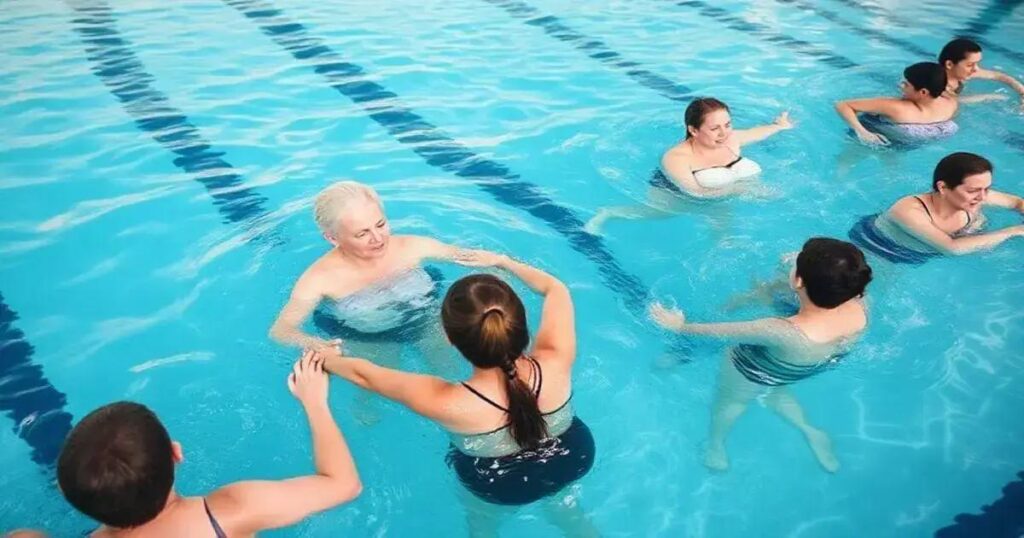Water-based exercise is a beneficial option for relieving joint pain, providing low-impact workouts that reduce stress on joints while enhancing mobility, strength, and overall fitness. Types of activities include aquatic aerobics, water walking, resistance training, and swimming, all designed to be gentle yet effective. Beginners are advised to start slow, choose the right pool, and focus on proper form to maximize their workouts.
Water-based exercise is a fantastic option for those struggling with joint pain. The buoyancy of water reduces stress on your joints while providing resistance to enhance your workouts. This dual action not only alleviates discomfort but also improves mobility, strength, and overall fitness. In this article, we will delve into the various benefits of water-based exercise, explore the types of activities you can engage in, and share tips for beginners looking to incorporate water workouts into their routine.
Understanding Water-Based Exercise

Understanding Water-Based Exercise involves recognizing its unique properties and benefits, particularly for those with joint pain. Water is a natural environment that provides support and reduces the impact on joints. When you exercise in water, the buoyancy allows you to move without putting excessive strain on your joints, which is especially helpful if you are living with arthritis or other joint conditions.
The Properties of Water contribute significantly to the effectiveness of water-based workouts. The resistance created by water works your muscles, which helps improve strength while also being gentle on your joints. As you move through the water, it pushes back against your movements, making your muscles work harder while the water cushions your body, minimizing discomfort.
The Importance of Buoyancy
Buoyancy plays a crucial role in water-based exercise. It provides a supportive environment that helps reduce the weight on your joints, which is why many physical therapy programs incorporate aquatic exercises. This safe environment enables individuals to engage in physical activity that might otherwise be too painful or strenuous on land.
Enhanced Range of Motion
Another significant benefit of exercising in water is the enhancement of your range of motion. The warmth of the water can also help relax your muscles and alleviate stiffness, allowing you to stretch more effectively. This can lead to improved flexibility and greater ease of movement, which are beneficial for managing joint pain.
Why Choose Water for Exercise?
Choosing water as your exercise medium can offer psychological advantages as well. Water workouts can be enjoyable and refreshing, encouraging consistency. When you like the activity you’re doing, you are more likely to stick with it, leading to long-term benefits for your joint health. Additionally, the social aspect of participating in group water classes can further enhance motivation and support.
How Water Eases Joint Pain

How Water Eases Joint Pain is a vital aspect to understand for those suffering from joint discomfort. The therapeutic properties of water make it an excellent medium for exercise and pain relief. The first key way water eases joint pain is through buoyancy. This allows individuals to perform movements with reduced stress on their joints. When a person exercises in water, their body is supported, allowing for greater freedom of movement without the normal impact.
Another important factor is the temperature of the water. Warm water can relax muscles and increase blood flow, which helps reduce stiffness in joints. This warmth can make it easier to stretch and move, enhancing the overall effectiveness of workouts aimed at alleviating pain.
Hydrostatic Pressure
Water also offers hydrostatic pressure, which is the water’s force against the body. This pressure can help reduce swelling and inflammation in painful joints. When submerged, the pressure acts like a gentle compression bandage, helping to improve circulation and reduce pain.
Gentle Resistance
Additionally, water provides gentle resistance which strengthens muscles without straining the joints. This resistance helps to build muscle while keeping the movements easy on the joints, which is crucial for those experiencing pain. Strong muscles surrounding joints can offer better support and stability, leading to a decrease in pain over time.
The Psychological Effect
Finally, exercising in water can have a psychological effect as well. Many people find water activities enjoyable and refreshing, which can lead to improved motivation and mental well-being. This positive mindset can play a significant role in managing chronic pain and encouraging a more active lifestyle.
Types of Water Exercises

Types of Water Exercises are diverse and can be tailored to suit individual needs, especially for those seeking joint pain relief. Here are some popular types of water exercises that can help strengthen muscles while being gentle on your body.
Aquatic Aerobics
Aquatic aerobics is a great cardiovascular workout. It usually takes place in shallow water, where participants perform various movements to music. This type of exercise increases heart rate and improves endurance while providing a reduced risk of injury.
Water Walking or Jogging
Water walking or jogging is simple yet effective. You can move through the water at your own pace, which can be less demanding on your joints than walking or jogging on land. This low-impact exercise is suitable for all fitness levels.
Water Resistance Training
Water resistance training involves using water weights or resistance equipment designed for the pool. This can include hand paddles or noodles. Working against the water’s resistance helps to build strength without placing excess stress on your joints.
Water Yoga
Water yoga is a calming practice that combines the principles of yoga with the soothing effects of water. This type of exercise focuses on flexibility, balance, and relaxation, making it especially beneficial for those suffering from joint pain.
Swimming
Swimming is an excellent full-body workout that is very low-impact. Different strokes can target various muscles, and the buoyancy of the water minimizes stress on joints. Many find swimming enjoyable and refreshing, making it easier to maintain a consistent exercise routine.
Aquatic Therapy
Aquatic therapy is often led by a trained professional and focuses on specific exercises tailored to individual rehabilitation needs. This specialized form of water exercise can help relieve joint pain while improving mobility and strength.
Tips for Starting Water Workouts

Tips for Starting Water Workouts can help you make the most of your experience while minimizing discomfort. Here are some practical tips to guide you as you begin your journey into water-based exercise.
Start Slow
When starting any new exercise routine, it is essential to start slow. Begin with short sessions, around 15 to 20 minutes, and gradually increase the duration as your body adapts. This will help prevent soreness or injury, especially if you have not exercised in a while.
Choose the Right Pool
Make sure to choose the right pool for your workouts. Look for a pool with a comfortable temperature, typically around 83°F to 88°F, as warm water can help ease joint pain and improve flexibility. Ensure the pool is clean and safe for exercise.
Wear Proper Gear
Wearing proper swim gear can make your workouts more enjoyable. Consider using a swimsuit that fits well and allows for easy movement. Check if you need aqua shoes for better grip and support, especially in slippery areas.
Focus on Form
While exercising in water, it is essential to focus on your form and technique. Good form will help you maximize your workout and reduce the risk of injury. If you’re unsure, consider joining a class where an instructor can guide you.
Stay Hydrated
Even though you are in water, it is crucial to stay hydrated. Drink plenty of water before and after your water workouts. Hydration helps maintain your energy levels and supports joint function during exercise.
Mix It Up
To keep your workouts interesting and effective, consider mixing up your activities. Try various water exercises like water aerobics, swimming, and resistance training to work different muscle groups and keep boredom at bay.
In Summary: Embracing Water-Based Exercise
Water-based exercise offers a multitude of benefits for individuals suffering from joint pain. The buoyancy of water provides support, reducing stress on joints and allowing for easier movement. With various types of activities available, such as aquatic aerobics, water walking, and resistance training, there’s something for everyone to enjoy.
By following the tips for starting water workouts, individuals can create a safe and effective exercise routine tailored to their needs. Gradually increasing workout intensity, focusing on proper form, and staying hydrated are all key factors for success.
Ultimately, integrating water exercises into your lifestyle can improve joint health, enhance mobility, and lead to a more active and fulfilling life. Don’t hesitate to take the plunge and experience the positive impact of water-based exercise on your wellness journey.
FAQ – Frequently Asked Questions about Water-Based Exercise for Joint Pain
What are the benefits of water-based exercise for joint pain?
Water-based exercise helps reduce stress on joints, improves mobility, and provides a low-impact way to strengthen muscles.
How do I get started with water workouts?
Start slow with short sessions, choose a comfortable pool, wear proper gear, and focus on your form to maximize benefits.
What types of water exercises can I do?
Popular types include aquatic aerobics, water walking or jogging, resistance training, water yoga, and swimming.
Is water temperature important during exercise?
Yes, a comfortable water temperature (around 83°F to 88°F) helps ease joint pain and improves flexibility during workouts.
How often should I do water exercises?
Aim for at least 3 to 4 times a week, gradually increasing intensity and duration based on your comfort and fitness level.
Can water workouts improve my overall fitness?
Absolutely! Water workouts can enhance cardiovascular fitness, strength, flexibility, and mental well-being through enjoyable activities.












